 W
WComputers can be classified, or typed, in many ways. Some common classifications of computers are given below.
 W
WA 2-in-1 PC, also known as convertible laptop, 2-in-1 tablet, 2-in-1 laptop, 2-in-1 detachable, laplet, tabtop, laptop tablet, or simply 2-in-1, is a portable computer that has features of both tablets and laptops.
 W
WA computer appliance is a computer with software or firmware that is specifically designed to provide a specific computing resource. Such devices became known as appliances because of the similarity in role or management to a home appliance, which are generally closed and sealed, and are not serviceable by the user or owner. The hardware and software are delivered as an integrated product and may even be pre-configured before delivery to a customer, to provide a turn-key solution for a particular application. Unlike general purpose computers, appliances are generally not designed to allow the customers to change the software and the underlying operating system, or to flexibly reconfigure the hardware.
 W
WAn asymmetric multiprocessing system is a multiprocessor computer system where not all of the multiple interconnected central processing units (CPUs) are treated equally. For example, a system might allow only one CPU to execute operating system code or might allow only one CPU to perform I/O operations. Other AMP systems might allow any CPU to execute operating system code and perform I/O operations, so that they were symmetric with regard to processor roles, but attached some or all peripherals to particular CPUs, so that they were asymmetric with respect to the peripheral attachment.
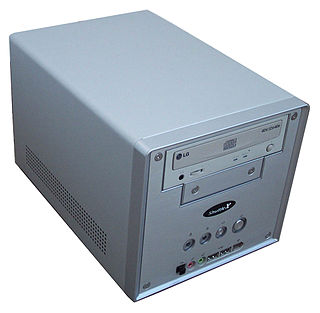 W
WA barebone computer is a partially assembled platform or an unassembled kit of computer parts allowing more customization and lower costs than a retail computer system. They are available for desktop computer, notebook and server purposes, and in nearly any form factor. Manufacturers are also able to produce systems of a specialized or non-standard form factor, since the system is sold as a pre-built unit, with the motherboard and power supply already installed.
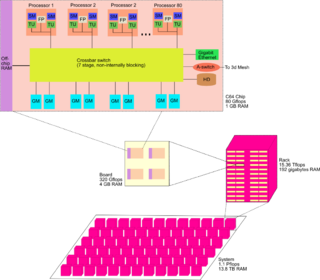 W
WA cellular architecture is a type of computer architecture prominent in parallel computing. Cellular architectures are relatively new, with IBM's Cell microprocessor being the first one to reach the market. Cellular architecture takes multi-core architecture design to its logical conclusion, by giving the programmer the ability to run large numbers of concurrent threads within a single processor. Each 'cell' is a compute node containing thread units, memory, and communication. Speed-up is achieved by exploiting thread-level parallelism inherent in many applications.
 W
WA computer cluster is a set of loosely or tightly connected computers that work together so that, in many respects, they can be viewed as a single system. Unlike grid computers, computer clusters have each node set to perform the same task, controlled and scheduled by software.
 W
WThe term "computer", in use from the early 17th century, meant "one who computes": a person performing mathematical calculations, before electronic computers became commercially available. Alan Turing described the "human computer" as someone who is "supposed to be following fixed rules; he has no authority to deviate from them in any detail." Teams of people, often women from the late nineteenth century onwards, were used to undertake long and often tedious calculations; the work was divided so that this could be done in parallel. The same calculations were frequently performed independently by separate teams to check the correctness of the results.
 W
WDecimal computers are computers which can represent numbers and addresses in decimal as well as providing instructions to operate on those numbers and addresses directly in decimal, without conversion to a pure binary representation. Some also had a variable wordlength, which enabled operations on numbers with a large number of digits.
 W
WA desktop computer is a personal computer designed for regular use at a single location on or near a desk or table due to its size and power requirements. The most common configuration has a case that houses the power supply, motherboard (a printed circuit board with a microprocessor as the central processing unit, memory, bus, and other electronic components, disk storage ; a keyboard and mouse for input; and a computer monitor, speakers, and, often, a printer for output. The case may be oriented horizontally or vertically and placed either underneath, beside, or on top of a desk.
 W
WDNA computing is an emerging branch of computing which uses DNA, biochemistry, and molecular biology hardware, instead of the traditional silicon-based computer technologies. Research and development in this area concerns theory, experiments, and applications of DNA computing. Although the field originally started with the demonstration of a computing application by Len Adleman in 1994, it has now been expanded to several other avenues such as the development of storage technologies, nanoscale imaging modalities, synthetic controllers and reaction networks, etc.
 W
WA domino computer is a mechanical computer built using dominoes to represent mechanical amplification or logic gating of digital signals. Because of the existence of multiple schemes, domino computer will be used in this article to denote any particular scheme that uses the mentioned base phenomenon for building machines equivalent to a computer. This choice of terminology may be somewhat arbitrary, because only few resources write on this topic.
 W
WThe Harvard architecture is a computer architecture with separate storage and signal pathways for instructions and data. It contrasts with the von Neumann architecture, where program instructions and data share the same memory and pathways.
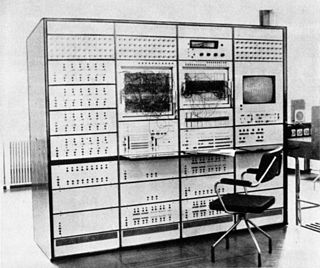 W
WHybrid computers are computers that exhibit features of analog computers and digital computers. The digital component normally serves as the controller and provides logical and numerical operations, while the analog component often serves as a solver of differential equations and other mathematically complex equations. The first desktop hybrid computing system was the Hycomp 250, released by Packard Bell in 1961. Another early example was the HYDAC 2400, an integrated hybrid computer released by EAI in 1963. In the 1980s, Marconi Space and Defense Systems Limited developed their "Starglow Hybrid Computer", which consisted of three EAI 8812 analog computers linked to an EAI 8100 digital computer, the latter also being linked to an SEL 3200 digital computer. Late in the 20th century, hybrids dwindled with the increasing capabilities of digital computers including digital signal processors.
 W
WAn industrial PC is a computer intended for industrial purposes, with a form factor between a nettop and a server rack. Industrial PCs have higher dependability and precision standards, and are generally more expensive than consumer electronics. They often use complex instruction sets, such as x86, where reduced instruction sets such as ARM would otherwise be used.
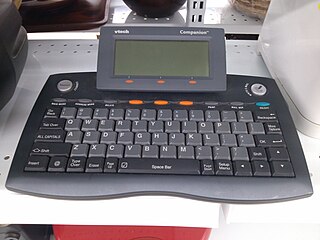 W
WAn Internet appliance is a consumer device whose main function is easy access to Internet services such as WWW or e-mail. The term was popularized in the 1990s, when it somewhat overlapped in meaning with an information appliance, Internet computer, network computer, or even thin client, but now it has fallen out of general use.
 W
WA laptop, is a small, portable personal computer (PC) with a "clamshell" form factor, typically having a thin LCD or LED computer screen mounted on the inside of the upper lid of the clamshell and an alphanumeric keyboard on the inside of the lower lid. The clamshell is opened up to use the computer. Laptops are folded shut for transportation, and thus are suitable for mobile use. Its name comes from lap, as it was deemed to be placed on a person's lap when being used. Although originally there was a distinction between laptops and notebooks, as of 2014, there is often no longer any difference. Today, laptops are commonly used in a variety of settings, such as at work, in education, for playing games, web browsing, for personal multimedia, and general home computer use.
 W
WMembrane computing is an area within computer science that seeks to discover new computational models from the study of biological cells, particularly of the cellular membranes. It is a sub-task of creating a cellular model.
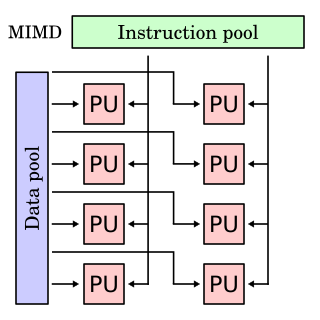 W
WIn computing, MIMD is a technique employed to achieve parallelism. Machines using MIMD have a number of processors that function asynchronously and independently. At any time, different processors may be executing different instructions on different pieces of data. MIMD architectures may be used in a number of application areas such as computer-aided design/computer-aided manufacturing, simulation, modeling, and as communication switches. MIMD machines can be of either shared memory or distributed memory categories. These classifications are based on how MIMD processors access memory. Shared memory machines may be of the bus-based, extended, or hierarchical type. Distributed memory machines may have hypercube or mesh interconnection schemes.
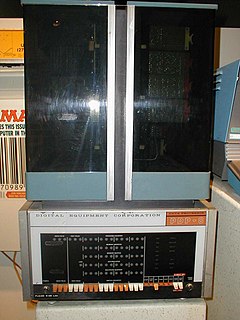 W
WA minicomputer, or colloquially mini, is a class of smaller computers that was developed in the mid-1960s and sold for much less than mainframe and mid-size computers from IBM and its direct competitors. In a 1970 survey, The New York Times suggested a consensus definition of a minicomputer as a machine costing less than US$25,000, with an input-output device such as a teleprinter and at least four thousand words of memory, that is capable of running programs in a higher level language, such as Fortran or BASIC.
 W
WIn computing, MISD is a type of parallel computing architecture where many functional units perform different operations on the same data. Pipeline architectures belong to this type, though a purist might say that the data is different after processing by each stage in the pipeline. Fault tolerance executing the same instructions redundantly in order to detect and mask errors, in a manner known as task replication, may be considered to belong to this type. Applications for this architecture are much less common than MIMD and SIMD, as the latter two are often more appropriate for common data parallel techniques. Specifically, they allow better scaling and use of computational resources. However, one prominent example of MISD in computing are the Space Shuttle flight control computers.
 W
Wmobile Internet device (MID) is a multimediacapable mobile device providing wireless Internet access. They are designed to provide entertainment, information and location-based services for personal or business use. They allow 2-way communication and real-time sharing. They have been described as filling a niche between smartphones and tablet computers.
 W
WA personal computer (PC) is a multi-purpose computer whose size, capabilities, and price make it feasible for individual use. Personal computers are intended to be operated directly by an end user, rather than by a computer expert or technician. Unlike large, costly minicomputers and mainframes, time-sharing by many people at the same time is not used with personal computers.
 W
WA personal supercomputer (PSC) is a high-performance computer system with capabilities and costs between those of standard personal computers and supercomputers. They allow an individual or organization to have access to a significant amount of computing power and are often used for a single purpose. They are typically built by the user, but commercial models are available. Although considerably more expensive than a personal computer, PSCs are affordable to many people.
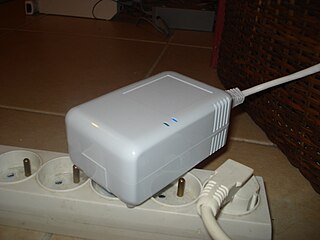 W
WA plug computer is an external device, often configured for use in the home or office as a compact computer. The name is derived from the small configuration of such devices; they are often enclosed in an AC power plug or AC adapter.
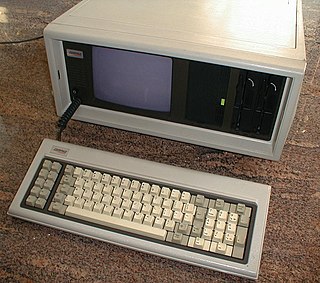 W
WA portable computer is a computer designed to be easily moved from one place to another and included a display and keyboard. The first commercially sold portable was the 50-pound (23 kg) IBM 5100, introduced 1975. The next major portables were Osborne's 24-pound (11 kg) CP/M-based Osborne 1 (1981) and Compaq's 28-pound (13 kg) 100% IBM PC compatible Compaq Portable (1983). These "luggable" computers lacked the next technological development, not requiring an external power source; that feature was introduced by the laptop. Laptops were followed by lighter models, so that in the 2000s mobile devices and by 2007 smartphones made the term almost meaningless. The 2010s introduced wearable computers such as smartwatches.
 W
WThe Post-PC era is a market trend observed during the late 2000s and early 2010s involving a decline in the sales of personal computers (PCs) in favor of post-PC devices; which include mobile devices such as smartphones and tablet computers as well as other mobile computers such as wearable and ubiquitous ones. These devices emphasize portability and connectivity, including the use of cloud-based services, more focused "apps" to perform tasks, and the ability to synchronize information between multiple devices seamlessly.
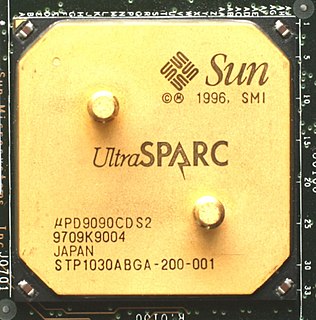 W
WA reduced instruction set computer, or RISC, is a computer with a small, highly optimized set of instructions, rather than the more specialized set often found in other types of architecture, such as in a complex instruction set computer (CISC). The main distinguishing feature of RISC architecture is that the instruction set is optimized with a large number of registers and a highly regular instruction pipeline, allowing a low number of clock cycles per instruction (CPI). Another common RISC feature is the load/store architecture, in which memory is accessed through specific instructions rather than as a part of most instructions in the set.
 W
WSilq is a new high-level programming language for quantum computing with a strong static type system, developed at ETH Zürich.
 W
WSingle instruction, multiple data (SIMD) is a class of parallel computers in Flynn's taxonomy. It describes computers with multiple processing elements that perform the same operation on multiple data points simultaneously. Such machines exploit data level parallelism, but not concurrency: there are simultaneous (parallel) computations, but only a single process (instruction) at a given moment. SIMD is particularly applicable to common tasks such as adjusting the contrast in a digital image or adjusting the volume of digital audio. Most modern CPU designs include SIMD instructions to improve the performance of multimedia use. SIMD is not to be confused with SIMT, which utilizes threads.
 W
WIn computing, SISD is a computer architecture in which a single uni-core processor executes a single instruction stream, to operate on data stored in a single memory. This corresponds to the von Neumann architecture.
 W
WA smartbook was a class of mobile device that combined certain features of both a smartphone and netbook computer, produced between 2009 and 2010. Smartbooks were advertised with features such as always on, all-day battery life, 3G, or Wi-Fi connectivity and GPS in a laptop or tablet-style body with a screen size of 5 to 10 inches and a physical or soft touchscreen keyboard.
 W
WA superminicomputer, colloquially supermini, was a high-end minicomputer. The term was used to distinguish the emerging 32-bit architecture midrange computers introduced in the mid to late 1970s from the classical 16-bit systems that preceded them. The development of these computers was driven by the need of applications to address larger memory. The term midicomputer had been used earlier to refer to these systems. Virtual memory was often an additional criteria that was considered for inclusion in this class of system. The computational speed of these machines was significantly greater than the 16-bit mincomputers and approached the performance of small mainframe computers. The name has at times been described as a "frivolous" term created by "marketeers" that lacks a specific definition. Describing a class of system has historically been seen as problematic: "In the computer kingdom, taxonomic classification of equipment is more of a black art than a science." There is some diagreement about which systems should be included in this class. The origin of the name is uncertain.
 W
WA superscalar processor is a CPU that implements a form of parallelism called instruction-level parallelism within a single processor. In contrast to a scalar processor that can execute at most one single instruction per clock cycle, a superscalar processor can execute more than one instruction during a clock cycle by simultaneously dispatching multiple instructions to different execution units on the processor. It therefore allows for more throughput than would otherwise be possible at a given clock rate. Each execution unit is not a separate processor, but an execution resource within a single CPU such as an arithmetic logic unit.
 W
WSymmetric multiprocessing (SMP) involves a multiprocessor computer hardware and software architecture where two or more identical processors are connected to a single, shared main memory, have full access to all input and output devices, and are controlled by a single operating system instance that treats all processors equally, reserving none for special purposes. Most multiprocessor systems today use an SMP architecture. In the case of multi-core processors, the SMP architecture applies to the cores, treating them as separate processors.
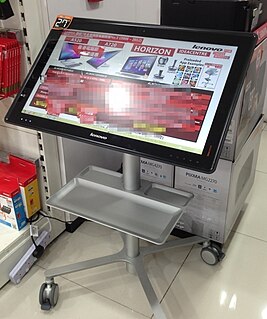 W
WA table computer, or a table PC, or a tabletop is a device class of a full-featured large-display portable all-in-one computer with an internal battery. It can either be used on a table's top, hence the name, or carried around the house.
 W
WA tablet computer, commonly shortened to tablet, is a mobile device, typically with a mobile operating system and touchscreen display processing circuitry, and a rechargeable battery in a single, thin and flat package. Tablets, being computers, do what other personal computers do, but lack some input/output (I/O) abilities that others have. Modern tablets largely resemble modern smartphones, the only differences being that tablets are relatively larger than smartphones, with screens 7 inches (18 cm) or larger, measured diagonally, and may not support access to a cellular network.
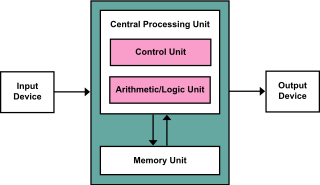 W
WThe von Neumann architecture—also known as the von Neumann model or Princeton architecture—is a computer architecture based on a 1945 description by John von Neumann and others in the First Draft of a Report on the EDVAC. That document describes a design architecture for an electronic digital computer with these components:A processing unit that contains an arithmetic logic unit and processor registers A control unit that contains an instruction register and program counter Memory that stores data and instructions External mass storage Input and output mechanisms
 W
WA wetware computer is an organic computer composed of organic material such as living neurons. Wetware computers composed of neurons are different than conventional computers because they are thought to be capable in a way of "thinking for themselves", because of the dynamic nature of neurons. While wetware is still largely conceptual, there has been limited success with construction and prototyping, which has acted as a proof of the concept's realistic application to computing in the future. The most notable prototypes have stemmed from the research completed by biological engineer William Ditto during his time at the Georgia Institute of Technology. His work constructing a simple neurocomputer capable of basic addition from leech neurons in 1999 was a significant discovery for the concept. This research acted as a primary example driving interest in the creation of these artificially constructed, but still organic brains.
 W
WA workstation is a special computer designed for technical or scientific applications. Intended primarily to be used by one person at a time, they are commonly connected to a local area network and run multi-user operating systems. The term workstation has also been used loosely to refer to everything from a mainframe computer terminal to a PC connected to a network, but the most common form refers to the class of hardware offered by several current and defunct companies such as Sun Microsystems, Silicon Graphics, Apollo Computer, DEC, HP, NeXT and IBM which opened the door for the 3D graphics animation revolution of the late 1990s.